
AR15 Gas Block
Gas blocks are critical components of AR-15 rifles that regulate the flow of gas from the barrel to cycle the action. There are several types of gas blocks available, each with its own features and advantages. Here are the main differences and options:
Front Sight Base (FSB) Gas Blocks:
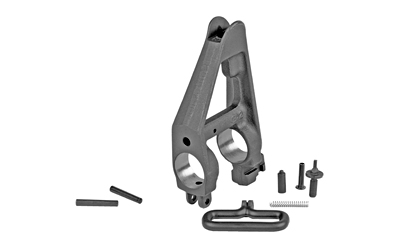
FSB gas blocks combine the gas block and front sight into a single unit. They are typically made of steel and are secured to the barrel with pins. FSBs are robust and offer a durable front sight option, but they limit flexibility for mounting accessories due to their integrated design.
Front sight gas blocks (FSB) are a common type of gas block used on AR-15 rifles, especially on traditional or retro-style builds. Here's a detailed overview of front sight gas blocks for AR-15 rifles:
Design:
FSBs combine the functionality of a gas block and a front sight into a single unit. They feature a tower-shaped front sight post assembly mounted directly above the gas block. The front sight post is adjustable for elevation to zero the rifle's sights.
Materials:
FSBs are typically made of steel, which provides durability and robustness, ensuring reliability under harsh conditions. Some FSBs may also feature a phosphate or nitride finish for corrosion resistance.
Attachment Method:
FSBs are secured to the barrel using two cross pins, which pass through holes drilled in the bottom of the gas block and corresponding holes in the barrel. This method provides a secure and stable attachment, preventing movement or rotation during firing.
Gas Port Location:
The gas port in an FSB is located directly above the gas hole in the barrel, allowing gas to enter the block and cycle the rifle's action. The gas tube is inserted into the front of the FSB and pinned in place to complete the gas system.
Front Sight Post:
The front sight post on an FSB is adjustable for elevation using a front sight tool or other suitable tool. Adjusting the front sight post allows the shooter to zero the rifle's sights for a specific range.
Compatibility:
FSBs are compatible with standard AR-15 barrels with a .750" diameter at the gas block journal. They are commonly found on military-style rifles and retro or clone builds seeking to replicate the appearance of older AR-15 variants.
Sight Options:
FSBs typically feature a standard A2-style front sight post, which provides a traditional sight picture. Some FSBs may also include a bayonet lug on the bottom for mounting bayonets or other accessories.
Aesthetic Considerations:
FSBs offer a classic look and feel reminiscent of traditional AR-15 rifles, making them popular for certain builds aiming for authenticity or nostalgia.
While front sight gas blocks have been a staple of AR-15 designs for decades, they may have some limitations compared to other gas block options, such as reduced flexibility for mounting accessories due to their integrated design. However, for shooters seeking a classic or retro aesthetic, or those prioritizing simplicity and durability, front sight gas blocks remain a popular choice for AR-15 builds.
Low-Profile Gas Blocks:
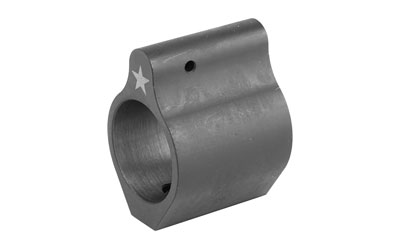
Low-profile gas blocks are smaller and lighter than FSBs and are designed to fit under handguards or rail systems. They are available in various materials, including steel, aluminum, and titanium. Low-profile gas blocks allow for more flexibility in mounting accessories and handguard selection but require a separate front sight or optic.
Low-profile gas blocks are popular options for AR-15 rifles, especially those equipped with free-floating handguards or rail systems. Here's an overview of low-profile gas blocks for AR-15 rifles:
Design:
Low-profile gas blocks are designed to fit under the handguard or rail system of an AR-15 rifle. They are smaller and lighter than front sight gas blocks, offering a streamlined appearance and compatibility with a wider range of handguard styles.
Materials:
Low-profile gas blocks are typically made of steel, aluminum, or titanium. Steel gas blocks offer durability and reliability, while aluminum and titanium options provide weight savings for lightweight rifle builds.
Attachment Method:
Low-profile gas blocks are secured to the barrel using set screws or clamping mechanisms. Set screw gas blocks use screws to secure them in place, while clamp-on gas blocks feature a split design that clamps around the barrel. Both attachment methods provide a secure and stable fit.
Gas Port Location:
The gas port in a low-profile gas block is positioned directly above the gas hole in the barrel, allowing gas to enter the block and cycle the rifle's action. The gas tube is inserted into the front of the gas block and secured in place with screws or pins.
Clearance for Handguards:
Low-profile gas blocks are designed to provide clearance for the installation of free-floating handguards or rail systems. They typically have a slim profile that allows the handguard to fit snugly over the gas block without interference.
Compatibility:
Low-profile gas blocks are compatible with standard AR-15 barrels with a .750" diameter at the gas block journal. They can be used with a wide range of handguard styles, including M-LOK, KeyMod, and Picatinny rail systems.
Accessory Mounting:
Unlike front sight gas blocks, low-profile gas blocks do not feature a built-in front sight post. This allows for more flexibility in mounting accessories, such as flip-up front sights, lights, lasers, or hand stops, on the handguard or rail system.
Aesthetic Considerations:
Low-profile gas blocks offer a clean and minimalist appearance, enhancing the overall aesthetic of the rifle, especially when paired with modern or sleek handguard designs.
Overall, low-profile gas blocks are versatile and practical options for AR-15 rifles, offering compatibility with a wide range of handguards and accessories while maintaining reliability and ease of installation. They are well-suited for a variety of applications, including competition shooting, hunting, and tactical use.
Adjustable Gas Blocks:
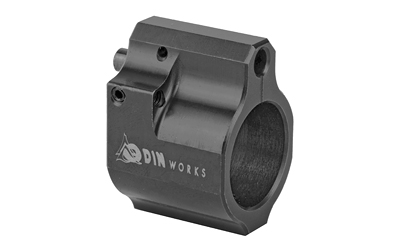
Adjustable gas blocks allow shooters to adjust the amount of gas flowing into the rifle's gas system, providing finer control over the cycling of the action. They can help optimize performance, reliability, and recoil management, particularly when using suppressors or different ammunition types. Adjustable gas blocks are available in both low-profile and FSB configurations.
Adjustable gas blocks are innovative components for AR-15 rifles that allow shooters to fine-tune the gas system, enhancing performance, reliability, and recoil management. Here's an overview of adjustable gas blocks for AR-15 rifles:
Functionality:
Adjustable gas blocks feature a mechanism that allows shooters to regulate the amount of gas flowing into the rifle's gas system. By adjusting the gas flow, shooters can optimize the rifle's cycling for various factors, including different ammunition types, suppressor use, or adverse environmental conditions.
Gas Regulation:
Adjustable gas blocks typically have a set screw, dial, or other adjustment mechanism that controls the size of the gas port. This adjustment alters the amount of gas that enters the gas system, allowing shooters to fine-tune the rifle's operation for optimal performance.
Benefits:
Fine-tuning the gas system with an adjustable gas block offers several benefits, including:
Increased reliability: Adjusting the gas flow can help mitigate issues such as over-gassing or under-gassing, ensuring reliable cycling under various conditions.
Recoil management: Properly adjusting the gas flow can help manage felt recoil, muzzle rise, and bolt carrier velocity, improving the shooter's ability to stay on target for faster follow-up shots and increased shooting comfort.
Suppressor compatibility: Adjustable gas blocks are particularly beneficial for AR-15 rifles equipped with suppressors. Shooters can adjust the gas flow to compensate for increased backpressure from the suppressor, ensuring reliable cycling and optimal performance.
Installation:
Adjustable gas blocks are installed in the same manner as standard gas blocks, using set screws or clamping mechanisms to secure them to the barrel. Once installed, shooters can access the adjustment mechanism to fine-tune the gas flow as needed.
Compatibility:
Adjustable gas blocks are compatible with standard AR-15 barrels with a .750" diameter at the gas block journal. They can be used with a wide range of handguard styles and are suitable for both carbine-length and rifle-length gas systems.
Aesthetic Considerations:
Adjustable gas blocks are available in various designs and finishes to suit different rifle builds and preferences. While they may not have the classic appearance of front sight gas blocks, they offer practical functionality and versatility.
Overall, adjustable gas blocks are valuable upgrades for AR-15 rifles, offering shooters the ability to customize their rifles for optimal performance in various shooting scenarios. Whether adjusting for different ammunition types, environmental conditions, or suppressor use, an adjustable gas block can help shooters get the most out of their AR-15 rifle.
Pinned Gas Blocks:
Pinned gas blocks are secured to the barrel using pins, providing a more permanent attachment method compared to set screw or clamp-on designs. Pinned gas blocks offer added stability and prevent rotational movement, ensuring consistent gas flow and alignment with the gas port.
A pinned gas block is a type of gas block used in AR-15 rifles that offers a secure and permanent attachment method. Here's an overview of pinned gas blocks for AR-15 rifles:
Attachment Method:
Pinned gas blocks are secured to the barrel using cross pins that pass through holes drilled in the gas block and corresponding holes in the barrel. Once the gas block is aligned and positioned correctly on the barrel, the pins are inserted and then permanently secured in place by drilling and pinning over the ends of the pins. This creates a strong and stable attachment that prevents movement or rotation during firing.
Permanent Installation:
Pinned gas blocks offer a permanent attachment method, unlike set screw or clamp-on gas blocks, which may require periodic tightening or adjustment. Once installed, the gas block cannot be easily removed without drilling out the pins, making it a durable and reliable option for AR-15 rifles.
Alignment and Fit:
Proper alignment and fit are crucial when installing a pinned gas block to ensure optimal gas flow and function. Careful attention must be paid to aligning the gas port in the barrel with the gas port in the gas block to prevent gas leakage or obstruction. Additionally, the gas block must fit snugly against the barrel to ensure a secure attachment.
Compatibility:
Pinned gas blocks are compatible with standard AR-15 barrels with a .750" diameter at the gas block journal. They can be used with various barrel profiles and lengths, including lightweight and heavy barrels. Pinned gas blocks are commonly found on military and law enforcement rifles, as well as civilian rifles seeking enhanced durability and reliability.
Durability and Reliability:
Pinned gas blocks provide a robust and reliable attachment method that withstands the rigors of extended use and adverse conditions. The permanent installation ensures consistent gas flow and cycling of the rifle's action, contributing to overall reliability and performance.
Aesthetic Considerations:
Pinned gas blocks offer a clean and minimalist appearance, enhancing the overall aesthetic of the rifle. They do not protrude from the barrel like front sight gas blocks, providing a streamlined and unobtrusive profile.
Overall, pinned gas blocks are popular options for AR-15 rifles seeking enhanced durability, reliability, and performance. Their permanent installation method ensures a secure attachment that withstands the demands of demanding shooting environments and applications. When properly installed, a pinned gas block provides a solid foundation for a reliable and accurate AR-15 rifle.
Set Screw Gas Blocks:
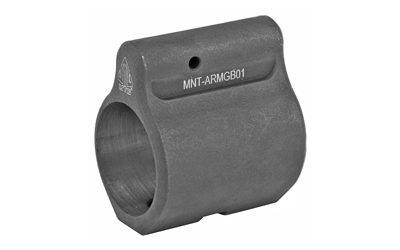
Set screw gas blocks use screws to secure them to the barrel. They are easy to install and remove, making them a popular choice for DIY builds and barrel upgrades. However, set screw gas blocks may require periodic retightening to prevent loosening during firing.
Set screw gas blocks are a type of gas block commonly used in AR-15 rifles. Here's an overview of set screw gas blocks:
Attachment Method:
Set screw gas blocks are secured to the barrel using set screws (typically two or more) that tighten against the surface of the barrel. These screws apply pressure to hold the gas block in place, ensuring a secure attachment. The screws are typically tightened using an Allen wrench or similar tool.
Installation:
Set screw gas blocks are relatively easy to install compared to pinned gas blocks. They require drilling and tapping holes in the barrel for the set screws to thread into. Once the gas block is aligned and positioned correctly on the barrel, the set screws are tightened to secure it in place. It's important to ensure that the gas block is properly aligned with the gas port in the barrel to prevent gas leakage or obstruction.
Adjustability:
Set screw gas blocks are not adjustable in the same way that adjustable gas blocks are. Once installed, the position of the gas block is fixed, and the gas system cannot be easily adjusted without removing the gas block.
Compatibility:
Set screw gas blocks are compatible with standard AR-15 barrels with a .750" diameter at the gas block journal. They can be used with various barrel profiles and lengths, including lightweight and heavy barrels. Set screw gas blocks are commonly used in both commercial and DIY rifle builds.
Durability and Reliability:
Set screw gas blocks provide a secure attachment method when properly installed. However, they may require periodic retightening to ensure they remain snug against the barrel. If the set screws loosen over time, it can affect the gas seal and potentially lead to cycling issues. Some shooters may use thread-locking compound on the set screws to help prevent loosening.
Aesthetic Considerations:
Set screw gas blocks offer a clean and minimalist appearance, similar to other low-profile gas block designs. They do not protrude from the barrel like front sight gas blocks, providing a streamlined and unobtrusive profile.
Overall, set screw gas blocks are popular options for AR-15 rifles due to their ease of installation and secure attachment method. While they may require periodic maintenance to ensure proper function, they offer a reliable solution for securing the gas block to the barrel and are suitable for a wide range of rifle builds.
Clamp-On Gas Blocks:
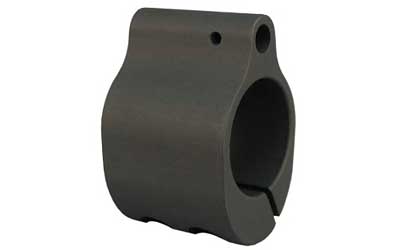
Clamp-on gas blocks feature a split design that clamps around the barrel, eliminating the need for screws or pins. They offer a secure and stable attachment method while allowing for easy installation and removal without marring the barrel surface. Clamp-on gas blocks are popular for lightweight and precision rifle builds.
Clamp-on gas blocks are a type of gas block used in AR-15 rifles that offer a secure attachment method without the need for set screws or pins. Here's an overview of clamp-on gas blocks:
Attachment Method:
Clamp-on gas blocks feature a split design that clamps around the barrel, eliminating the need for drilling or tapping holes in the barrel. They typically consist of two halves that are secured together using screws or bolts. This design allows for easy installation and removal without marring the barrel surface.
Installation:
Installing a clamp-on gas block is straightforward and does not require special tools or permanent modifications to the barrel. The two halves of the gas block are positioned around the barrel, and screws or bolts are tightened to secure them in place. Proper alignment of the gas block with the gas port in the barrel is essential to ensure optimal gas flow and function.
Adjustability:
Like set screw gas blocks, clamp-on gas blocks are not adjustable once installed. The position of the gas block is fixed, and the gas system cannot be easily adjusted without removing the gas block.
Compatibility:
Clamp-on gas blocks are compatible with standard AR-15 barrels with a .750" diameter at the gas block journal. They can be used with various barrel profiles and lengths, including lightweight and heavy barrels. Clamp-on gas blocks are commonly used in both commercial and DIY rifle builds.
Durability and Reliability:
Clamp-on gas blocks provide a secure attachment method that eliminates the risk of set screws loosening over time. The split design evenly distributes clamping force around the barrel, ensuring a stable and secure fit. Once installed, clamp-on gas blocks require minimal maintenance and offer reliable performance.
Aesthetic Considerations:
Clamp-on gas blocks offer a clean and minimalist appearance, similar to other low-profile gas block designs. They do not protrude from the barrel like front sight gas blocks, providing a streamlined and unobtrusive profile.
Overall, clamp-on gas blocks are popular options for AR-15 rifles due to their ease of installation, secure attachment method, and compatibility with a wide range of barrel profiles. They offer a reliable solution for securing the gas block to the barrel without the need for permanent modifications, making them suitable for various rifle builds and configurations.
Railed Gas Blocks:
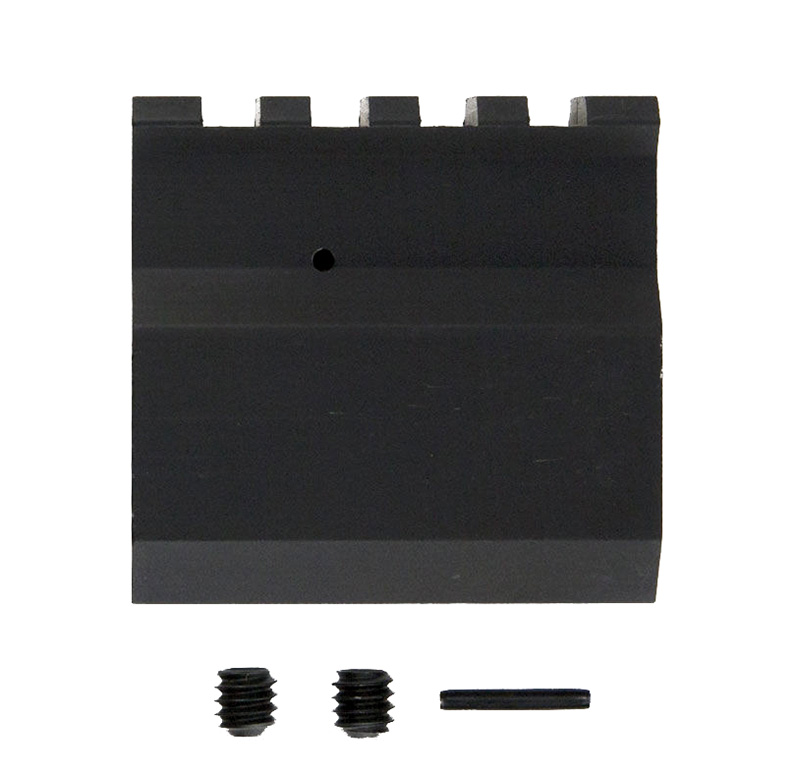
Railed gas blocks feature Picatinny or M-LOK slots on the top or sides, providing additional mounting points for accessories such as front sights, lights, lasers, or hand stops. They offer increased versatility and customization options for AR-15 rifles with fixed or free-floating handguards.
Railed gas blocks are a type of gas block used in AR-15 rifles that feature integrated Picatinny or M-LOK slots, providing additional mounting points for accessories. Here's an overview of railed gas blocks:
Attachment Method:
Railed gas blocks are typically secured to the barrel using set screws, clamping mechanisms, or a combination of both. The attachment method may vary depending on the specific design of the railed gas block.
Integrated Rails:
Railed gas blocks feature Picatinny or M-LOK slots along the top or sides, allowing for the direct attachment of accessories such as front sights, lights, lasers, or hand stops. These integrated rails eliminate the need for additional rail sections or adapters, providing a streamlined and compact mounting solution.
Versatility:
Railed gas blocks offer increased versatility and customization options for AR-15 rifles. Shooters can mount accessories directly to the gas block, expanding the rifle's capability and functionality without adding bulk or weight.
Compatibility:
Railed gas blocks are compatible with standard AR-15 barrels with a .750" diameter at the gas block journal. They can be used with various barrel profiles and lengths, including lightweight and heavy barrels. Railed gas blocks are suitable for both carbine-length and rifle-length gas systems.
Durability and Reliability:
Railed gas blocks provide a secure attachment method when properly installed. They are constructed from durable materials such as steel, aluminum, or titanium, ensuring reliable performance under demanding shooting conditions.
Aesthetic Considerations:
Railed gas blocks offer a tactical or modern appearance, enhancing the overall aesthetic of the rifle. They provide a sleek and integrated mounting solution for accessories, contributing to a clean and professional look.
Accessory Mounting:
With integrated rails, shooters have the flexibility to mount accessories directly to the gas block without the need for additional rail sections or adapters. This allows for a more streamlined and compact rifle setup, reducing potential snag points and improving overall ergonomics.
Overall, railed gas blocks are popular options for AR-15 rifles seeking enhanced versatility and customization options. They offer a practical solution for mounting accessories directly to the gas block, expanding the rifle's capability and functionality while maintaining a sleek and professional appearance. When properly installed and configured, a railed gas block can enhance the performance and usability of an AR-15 rifle in various shooting scenarios.
When selecting a gas block for your AR-15 rifle, consider factors such as compatibility with your barrel profile, handguard type, and intended use. Choose a gas block that provides the features and functionality that best suit your shooting needs and preferences. Additionally, ensure proper installation and alignment to maintain reliable gas flow and optimal rifle performance.



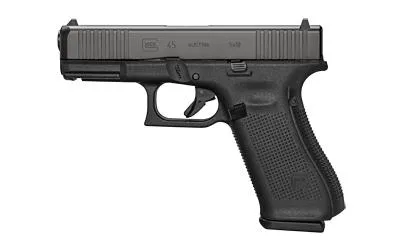
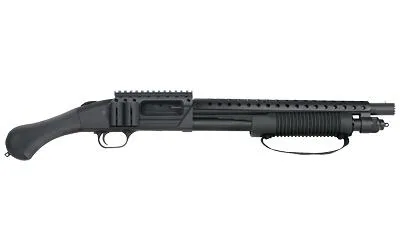
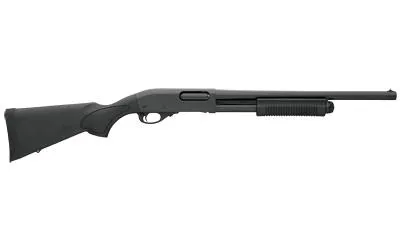
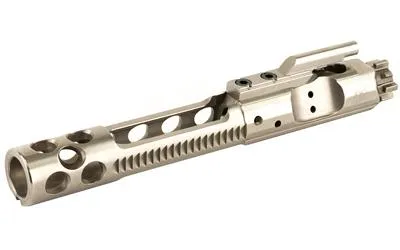
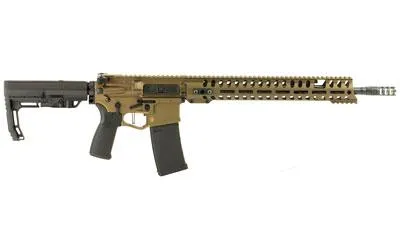
Facebook